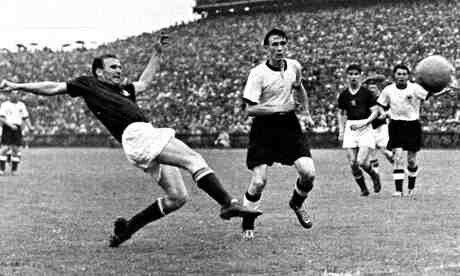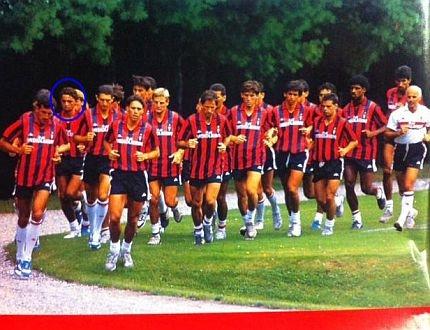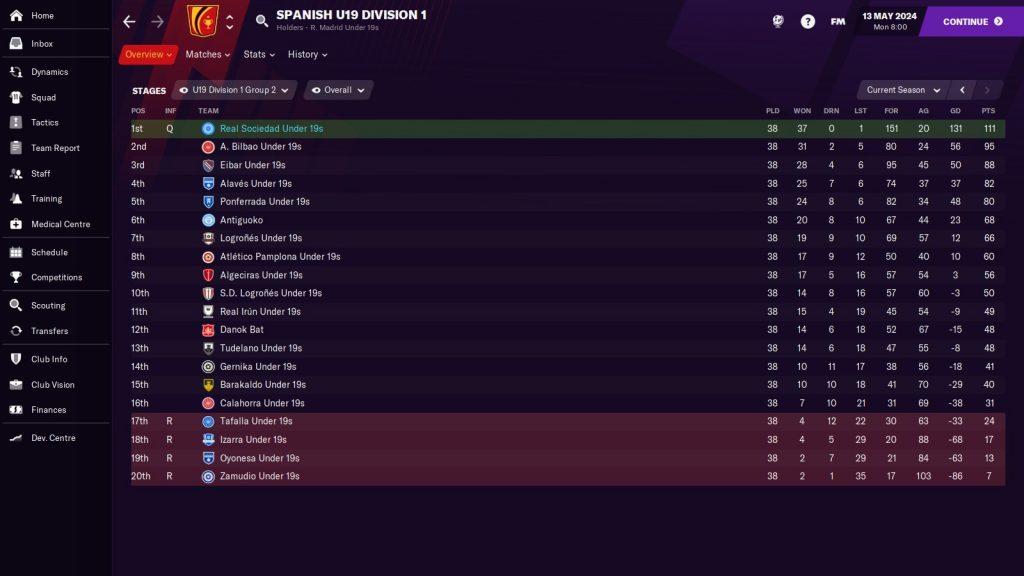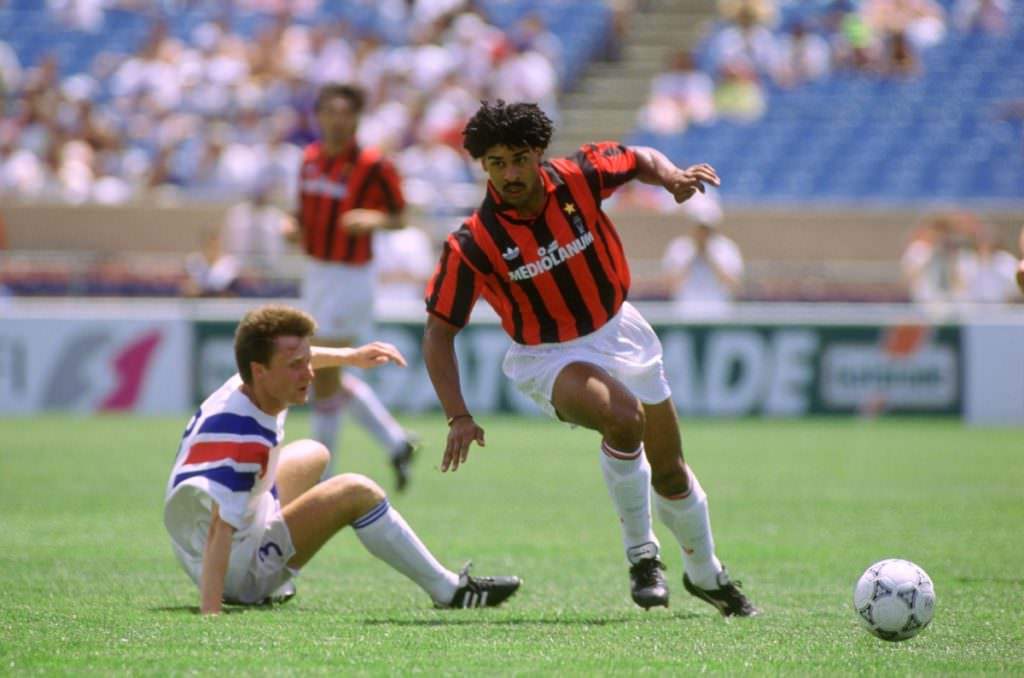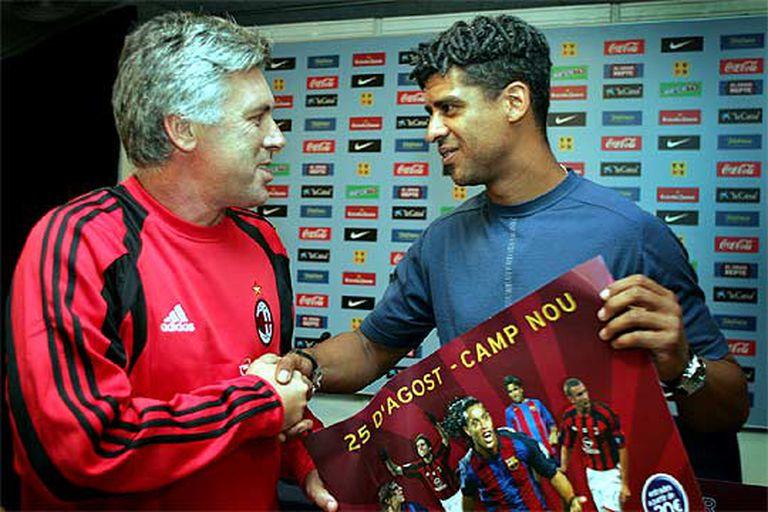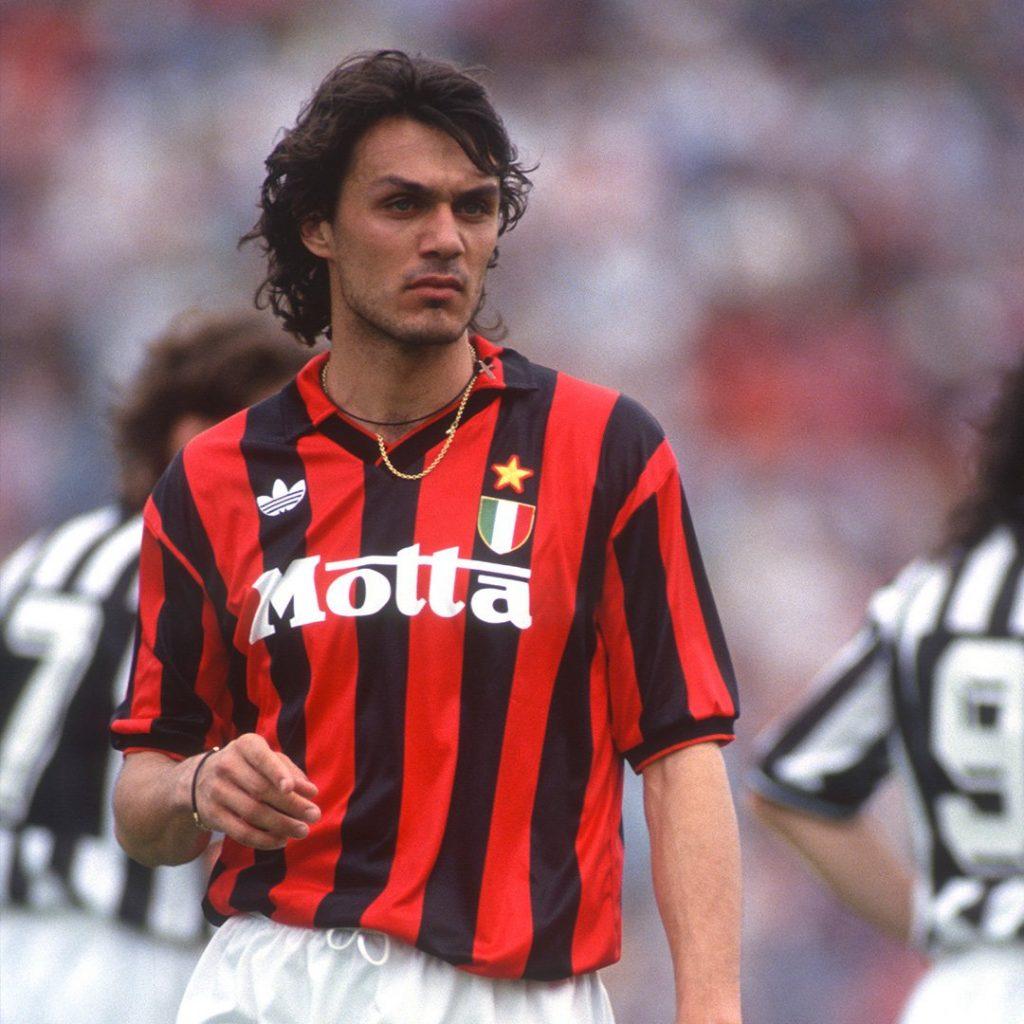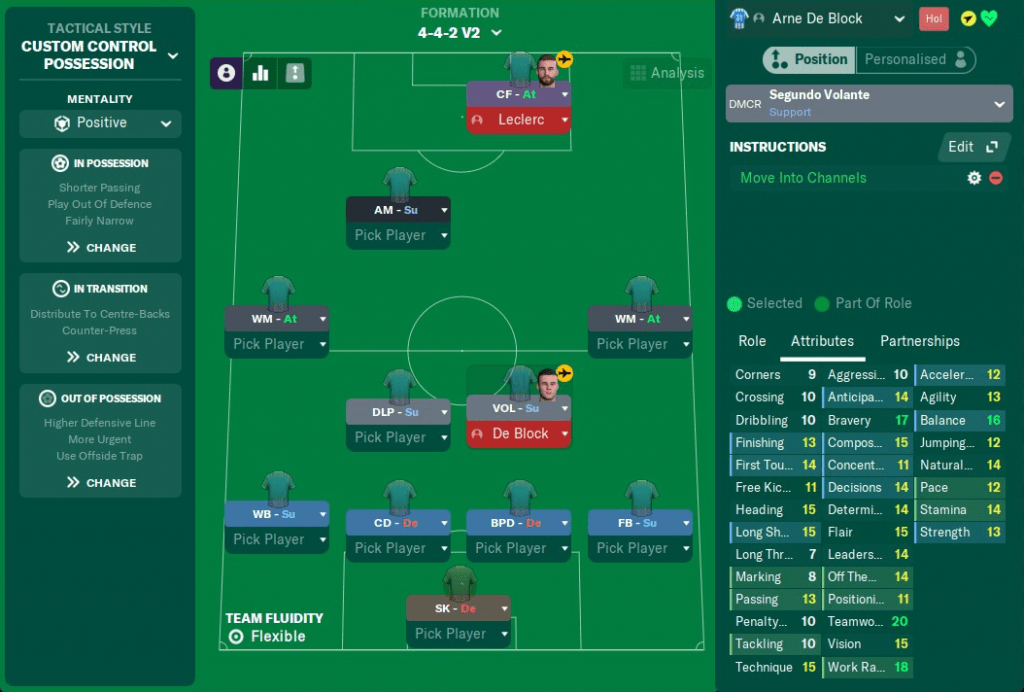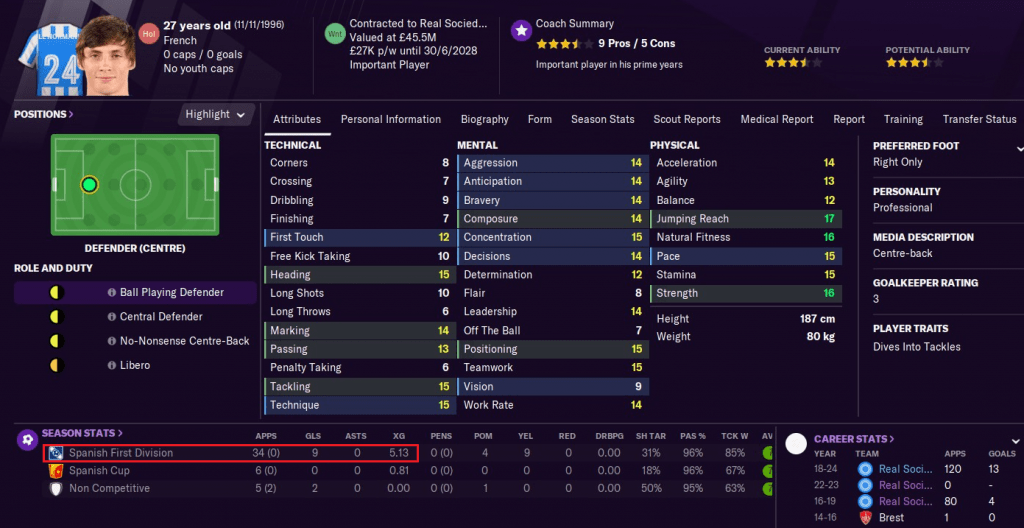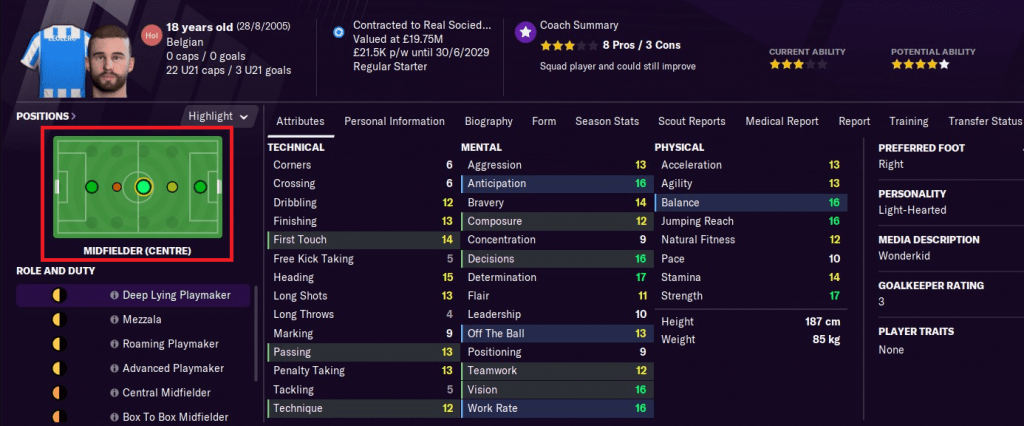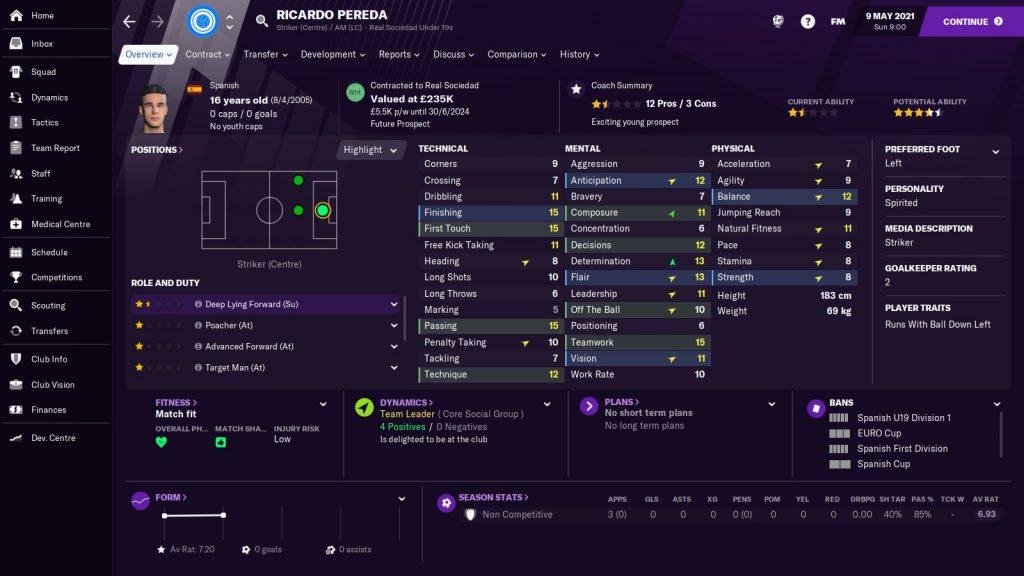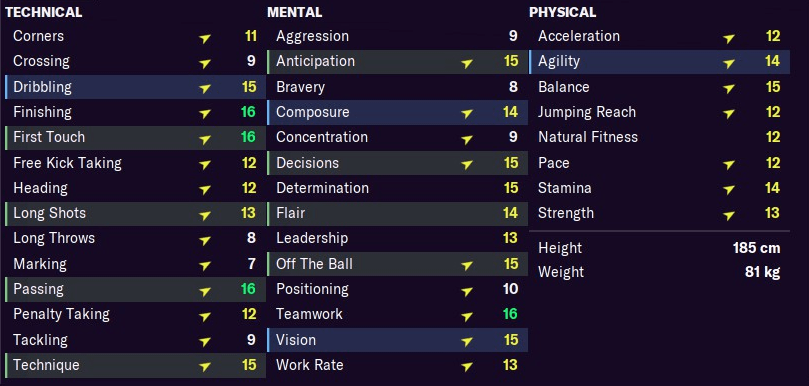
Total Football Journeyman: Arrigo Sacchi & The Cult of Universal Player
Catenaccio and its later Zona Mista iteration, had a huge impact on Italian Football. To the point where this defensive, counter-attacking strategy embodied the meaning of Gioco all’italiana, Italian Game. For almost three decades, Italian giants like Inter, Juventus and AC Milan dominated Calcio with their risk-averse tactics. The success of Catenaccio’s Holy Trinity managers, Helenio Herrera, Nereo Rocco and Giovanni Trapattoni, encouraged copycats with their own Scudetto dreams. At the same time, any diversions towards riskier tactical approaches were discouraged. In the end, it took a former shoe salesman with a Dutch brain and Brazilian heart, to break Catenaccio’s hold and change Italian football forever. This is his story. His name – Arrigo Sacchi. And his game was Total Football. A game played by “universal” players.
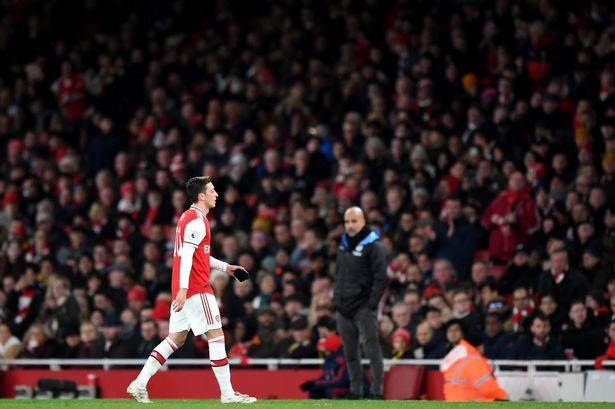
The era of the specialist is over. When you look at teams like Pep Guardiola’s Man City, can you even pin-point who is the playmaker in any specific match? It is no secret that Pep prefers to use players, equally adept at attacking, defending and playmaking. So just as the Classic #10 playmaker role is becoming a thing of the past (with playmaking specialists like Mezut Ozil moving into the backwoods of football), there is a great change coming to how we play, and view football.
It’s a paradigm shift that has been long overdue. Total Football ideal, as first prophesied by Magical Magyars and the Ajax super-teams, involved every player capable of playing any position. At first, it seemed like an unattainable dream to all but the most elite clubs. Until Arrigo Sacchi’s Milan showed that any team of well-rounded, versatile footballers (“universal” players if you will) could learn to play Total Football.
Same goes for FM21. In the game, role and position versatility among your players is required to mold them into Total Footballers. So how did Arrigo Sacchi achieve this change? Going from the rigid Catenaccio, a system built entirely from specialist roles to one that elevated the universal generalist player to the highest level. First, lets have a bit of background before we start trying to replicate his philosophy in the game.
Shoe Salesman From Fusignano
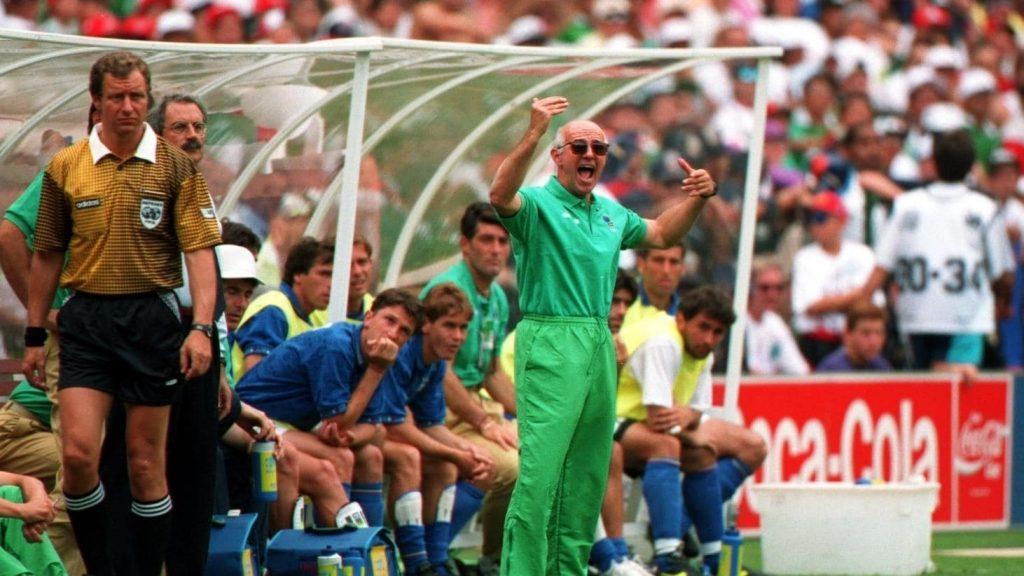
Arrigo Sacchi was a complete outlier when he took over as manager of AC Milan in 1987. Before taking the job, he had no experiences as a professional footballer nor as a coach for a top-flight club. In fact before moving into the spotlight, he spent more time working in a shoe store than managing a professional football team. However, Sacchi had a singular vision for the future of Italian football. A vision heavily influenced by watching and admiring the Hungarian, Dutch and Brazilian super teams of the past. He loved the hardworking team ethic of Total Football and the technical flair of Brazil’s Jogo Bonito. Later Sacchi’s tactical philosophy would combine the two schools of “beautiful” football in a unique way. A new style that would define a generation of Italian footballers as well as imprint a new identity on Calcio.
The fact that Sacchi accomplished this with no prior playing (and very little managing) experience is simply unprecedented. It truly shows what a tactical brain combined with a deep love of the game can accomplish. So maybe there is still hope for all of us armchair managers.
Sacchi famously said:
I never realised that in order to become a jockey you have to have been a horse first

Making Football Entertaining Again
Arrigo would build his reputation on going against the grain and proving his critics wrong. He took a risky, attacking system and made it work in Italy’s conservative risk-averse footballing culture. But what I love most about his revolutionary approach is how simple it was. Using the most basic formation, 4-4-2 (or some would argue 4-4-1-1 with Gullit playing deep), Sacchi was able to create some very beautiful fluid football. In the process, proving once and for all that Total Football was bigger than the sum of its parts. It is not about any particular formation. Rather Total Football is all about how your players work together on the pitch. But more importantly it was about the players.
I won’t bore you with more details of Arrigo Sacchi’s biography and his achievements as manager. All you need to know is that he won Serie A once and Champions League twice (European Cup then), all in the space of three years. His Wikipedia article can fill you in on the rest. By far it is more important HOW he did this. He used a simple 4-4-2 (rare in Italy at the time) with a very high defensive line and intense pressing. In essence Sacchi’s tactics were all about creating a natural heavy press through manipulation of space (Pep Guardiola anyone?). Essentially, Sacchi created extremely fluid football that was both very attacking and defensive depending on the phase of play. It was Total Football in all but name. Or as close as we got to that ideal, first introduced by the Magyars, in the last 60 years.
So before we examine in greater detail those elements that made Sacchi’s 4-4-2 work, time for a little tactical disclaimer. The tactic that I am going to reveal in the end is not going to be an exact replica of Sacchi’s Milan by any means. Rather it’s my attempt at showcasing how 4-4-2 can be an effective and entertaining Total Football formation. Not to get hung up on the tactical details like whether Donadoni cut inside or not. After-all Football Manager is a game and has its limitations (despite some really great recent advances in its tactical creator). In all this I will try to keep my ultimate goal in mind. That is creating a fun, entertaining attacking tactic while using a simple 4-4-2 defensive shape. It is also not a plug-and-play tactic. You will need some very versatile “universal” players.
Pressing and Compactness
Sacchi’s Milan played with a very high defensive line and intense pressing. This enabled them to squeeze the play into the middle of pitch, ensuring that the distance between the defence and attack was never more than 25 meters. It is because he wanted his team to play in a compact block. This would allow less effort from the players to press the opposition in their own half. If the advanced line was broken, the second line had time to organize and act immediately to retake possession. In practice it proved really effective. The opponent was not allowed the breathing room to find an effective passing option. And not many teams could break through three successive lines of players. It goes without saying that Sacchi had a team of very hard-working team-players. Even his strikers could fill in for the midfielders or defenders.
Zonal Defending
The football I wanted was active also in the defensive phase, the players had to be protagonists through pressing.
Arrigo Sacchi
Sacchi’s unique approach to “proactive” defending required a complete switch in how players marked their opponents. A total mental and theoretical paradigm shift. Not just on the tactical board but on the training field as well. The traditional man-marking of the Catenaccio system was not a fit with the fluid way of playing that Sacchi preferred. So Sacchi taught his players to play in the way he wanted. Those who couldn’t grasp the new style, he transferred out. And got new players who understood Total Football.
The players had to work together as a team to defend zonally. In this Sacchi intense training method, centered on teamwork and discipline, turned out very effective. He even created a whole new way to train.
Shadow Play (practice without the ball) was used to get Milan’s players more comfortable marking zones on the pitch, rather than specific players. Sacchi was able to completly shift his player’s mental outlook from man-marking to zonal marking. His team not only had to attack fluidly as one, but also defended as one hunting pack. The start of the modern Gegenpress tactics.
I will be representing this rather primitively with closing down team instructions coupled with counter-press TI. In reality Sacchi’s pressing and zonal marking was much more complex. The pressing his teams employed was not some constant mad rushing about. In fact, his Milan practiced different types of press, depending on the different times in the match.
There was partial pressing, where it was more about jockeying; there was total pressing which was more about winning the ball. [And] there was fake pressing, when we pretended to press, but, in fact, used the time to recuperate
Inverting The Pyramid, Jonathan Wilson
Unfortunately, we cannot really represent this important detail in the game. Not in FM21 at least. Nevertheless I believe that the game’s current system of setting the Defensive Line and Lines of Engagement has given us, virtual managers, more tools than ever before. Especially in how
Offside Trap
Offside Trap was another weapon that Sacchi used strategically. Combined with the high defensive line and intense pressing it was central to his way of playing.
Entertaining Beautiful Football
Above all else Arrigo Sacchi wanted his team to play entertaining attacking football that was both pleasing to the eye and exciting to the fans. The pedigree of Jogo Bonito‘s penchant for flair mixed with the unstoppable drive of the Dutch. Similarly to Arrigo Sacchi I too want to see my clubs in FM21 to not just win but play entertainingly. Which is why the approach of mixing Total Football’s intense pressing with Jogo Bonito’s flair was such an appealing option. Arrigo Sacchi’s Milan was both highly entertaining to the fans and hard to play against. And in FM21, a simple tactic created with some of Sacchi’s principles in mind can have all the makings of a super-tactic.
Within days of switching to this tactic, these are the kinds of performances I’m seeing from my Reserve team. And then there are the achievements of my u19 squad, also using the same Arrigo Sacchi-inspired formation.
In fact my Under-19 squad has been undefeated in 37 games since they started implementing this tactic. That is one game away from a perfect season. In FM21, how well your youth teams do against lesser opposition is usually a good indicator of the effectiveness of your tactic. So good signs early on. Maybe we can recapture some of that Sacchi magic in the game. But with Sacchi’s Milan it was not as much about the instructions, as the players. Actually it probably had a lot to do with the players.
Magician and His Players
Arrigo Sacchi’s Dutch connection – Frank Rijkaard, Marco Van Basten and Ruud Gullit. Were three key players in Sacchi’s Milan side. All three were very versatile, “universal” footballers in the mold of the Dutch Total Footballers of old like Johan Cruyff and Johan Neeskens. And these three contributed greatly to the one aspect of Sacchi’s tactic that interests me the most – its Attacking Phase.
In the nutshell Sacchi always looked to creating entertaining brand of attacking football. It was his natural reaction against the defensiveness of Catenaccio that still dominated Serie A at the time. He took on the challenge to prove such conservative tactics wrong and score as many goals as possible in the process. In order to achieve this goal, Sacchi asked his players to focus on two things: Movement and Teamwork. They laid the groundwork for his Total Football approach.
The combination of the two allowed for some truly inspiring coordinated attacks and flowing plays. Such as wingers cutting inside to allow room for an overlapping full-backs. It might seem like a common strategy in football today. But in the 80s it was a tactical novelty and a way to trick opposition’s defensive structure. However it required exceptional understanding of the spatial movement (Anticipation, Decisions and Off the Ball if you will) and strong commitment to Teamwork throughout the squad in order to execute it in a coordinated manner.

The image above is best representative of the positioning and intelligent movement that Sacchi’s Milan was famous for. A year after he took over, in 1988-89 season all the cogs in Milan’s Total Football machine were in place. First there was Frank Rijkaard, the only player whom his manager allowed some kind of specialized playmaker role. But even then, Rijkaard was so much more than that. He was like a dynamo machine in Milan’s midfield. A veritable jack of all trades player. The formations beating heart.
His wikipedia entry describes him as one of the greatest players in his position.
Rijkaard was a quick, strong, complete and tenacious defensive midfielder who was praised by pundits throughout his career for his physical and athletic attributes, his work rate, positioning, his acute tactical intelligence and decision-making, as well as his outstanding consistency and ability to read the game. Due to his aggression and versatility, he was also capable of playing as a central or box-to-box midfielder, and even in a defensive role, usually in the centre.
Although Rijkaard was known as strong tackler, he was surprisingly elegant for a player of his size, and also possessed good technique, passing ability, link-up play, and vision, which made him adept at starting attacking plays as a deep-lying playmaker once he won back possession; because of his technical skills and creative abilities, he was also capable of playing in more advanced roles, as an attacking midfielder or second striker.” – Wikipedia
As you can see Rijkaard was a perfect example of a versatile “universal” player that Arrigo Sacchi prized so much. But he was not the only one on the squad.
The blockbuster signing of Frank Rjikaard in turn allowed his midfield partner Ancelotti more freedom to move away from mere central midfield defensive duties. Instead Ancelotti could now move sideways to better link up with the onrushing Maldini. Maldini was the only fullback who had more license to advance forward and was also tasked with providing width on the left flank. Another wonderfully well-round player. Most known for his versatility throughout his career, Maldini started out as a rightback, then moved to the left before finishing his career (as his pace declined) as one of the best centreback stoppers ever. It goes without saying that he excelled in both attack and defence. At his prime he was an ultimate complete wingback who defended very well but could move forward at a moment’s notice.
Thus Ancelotti sort of took on the carrilero role (although again he did much more than that) which allowed Maldini to push up and act as a passing option for Colombo and Gullit. At the same time on the right flank, Donadoni would cut inside into the right half space. At other times Donadoni would be the one providing width, as Colombo moved into the left half-space. A sort of movement that is too complicated to show in FM21, so I will try to keep it simple limiting the tactic to one wide and in-field runner per side. The goal is still the same, trying to create a tactic where we use as much of the pitch as possible, as efficiently as possible. Pep would probably label it Juego de Posicion. To Arrigo Sacchi it was simply playing football. The only way that made sense.
If Rijkaard was the heart of the formation, then Gullit was surely its brain.
Ruud Gullit was the vital cog in linking Milan’s attack midfield and defense. Once they won the ball back, they would try to pass to Gullit. To facilitate this he became adapt at dropping into the space between the lines and was able to find room to operate in no matter how compact the opposition defence got. His team-mates never had a problem in finding him open.
“A complete and versatile player, Gullit epitomized the ethos of Total Football as he was naturally adept in several positions, and was capable of aiding his team defensively as well as offensively due to his work-rate, ball-winning abilities, and tactical intelligence in addition to his skill and physical qualities. Normally deployed as an attacking midfielder or as a second striker, he was capable of playing anywhere in midfield or along the front-line, on either wing or even in the centre, and could also play as a sweeper.” – Wikipedia
Despite his attacking qualities, Gullit was definately a key creative presence. Thus to compliment his amazing supporting qualities he needed a partner who was equally exceptional in his clinical finishing and eye for goal. So that the chances that Gullit couldn’t finish himself, his partner would. Naturally Sacchi partnered Gullit with one of the most complete strikers of his generation, Milan’s third Dutch acquisition, Marco van Basten. Van Basten was a personification of a Complete Forward:
“Regarded as one of the greatest and most complete strikers and players in the history of the sport, due to his prolific goalscoring and great skill set, Van Basten was dubbed the “Swan Of Utrecht” for his elegance and intelligent attacking play, and was known for his penchant for scoring acrobatic goals. His height and strength allowed him to excel in the air, and his technical ability and agility saw him execute spectacular strikes throughout his career, such as volleys and bicycle kicks. A fast and opportunistic striker with quick reactions and excellent movement, he often took advantage of loose balls in the penalty area due to his ability to anticipate defenders, and was capable of both controlling fast and difficult balls well with one touch, or even shooting first time.” – Wikipedia

And Did I mention that he was a Complete Forward?
“Although he was mainly known as a traditional attacker who operated in the penalty area as a centre-forward throughout his career, Van Basten also possessed excellent vision and distribution, in addition to his goalscoring ability, which enabled him to play in deeper, more creative positions, as a second striker, for example, and which allowed him to participate in the build-up of attacking plays and provide assists to his teammates in addition to scoring goals himself” – Wikipedia
My Total Football Dream Team
Finally, how does my own Sacchi-inspired tactic look? I tried for the most part to stay true to the ideas of compactness, high defensive line, and intense pressing. But FM21 has never been about tweaking instructions. It is a game about managing people. So I will start with one of the key players around whom I built this formation. My very own “Gullit”.
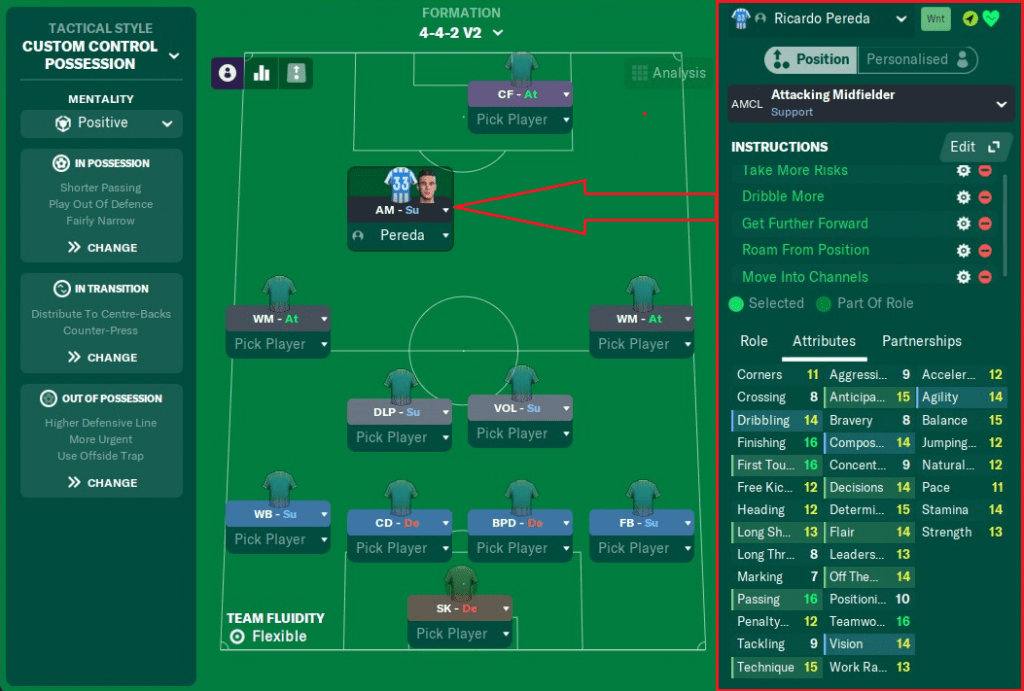
19 year-old Ricardo Pereda. A product of Real Sociedad youth academy. I might have bragged about him on here before, since I am rather proud of this particular youngster. He was the shining gem in our very first youth intake, graduating in March 2021. Since then he went on to make 53 Senior Team appearances, scoring 7 goals while assisting on 9 others. Which is not a bad return for a teenager who has been mostly used as a sub to our current AMC star, Mikel Oyarzabal.
Pereda still has a lot of growing to do, especially if he is to fill the big shoes of Gullit. But already you can see that he possess similar athletic ability (although still needs to improve his acceleration and pace) and impressive reach in the air. Also Ricardo has a lot of creativity and technical skill to excel in his link-up role while still being a dangerous attacking threat going forward. There are also signs of versatility that Gullit was famous for. As you can see Pereda’s defensive attributes are rather good for AMC/Secondary Striker so that he could even slot into a midfield role. That is if I had no other more suitable choices there. And we definately do (wait until you see my “Rikjaard”).
In the above image you can also see my tactic and all the necessary PIs for Pereda’s role. My choice of PIs has actually been influenced by in-game Trequartista role. I tried to mix the behavior of that role with a less-aggressive individual mentality of AMC(S) role. This is because in the game both Shadow Striker and Trequartista roles operate with “Very Attacking” individual mentality, which was not ideally what I want from my “Gullit”. While AMC (Support) plays with a “Positive” individual mentality which allows him to balance better his attacking tendencies with more a supporting link-up role. I also prefer it to the “Balanced” individual mentality that a typical supporting striker like False9 or DLF(S) would have here. It is not enough and sometimes makes the player too passive.
I believe the “Positive” individual mentality choice is vital in this #10 role as it allows the player to contribute more equally to attack and build-up. Exactly as you would wish your secondary, supporting striker to do. As an example, my current number one choice for AMC, Oyarzabal, has been performing really well in this role. He racked up 16 league goals and 10 assists in 32 games. And that number probably could have been even better had he not been sidelined with a 6 week-long injury towards the end of the season. So who said that AMC position cannot perform well in FM21?

Training Universal Players
TACTICAL VERSATILITY – The ability to play multiple positions. I think it is really essential to Total Football style. Much like Arrigo Sacchi I am a big fan of generic roles and players who can play in multiple positions in my tactics. In most cases I prefer to use them instead of the more exotic, specialized roles. Unless I really need a specific behavior that I cannot model with a generic role. For instance, I could not avoid using the Segundo Volante because I really wanted a Box-to-Box type of midfielder in deeper position. And Segundo Volante is really unique role in the game to be hardcoded to act like this. It’s also why it’s been my favourite role since it first appeared in the game. And Arne De Block, whom I use in this role, is my favourite player in this squad.
The young Belgian hits high on all of the key attributes that I am looking for in my total footballers – especially Bravery, Teamwork, Workrate, and Balance. And still has lots of potential to develop into a very well-rounded player. Exactly what you need in deeper midfield position. I cannot stress how important it is to use hard-working team-players with all-around good technical skills. So as you might guess, Arne is this formation’s Rijkaard. I’m also developing him into our Half-space runner, hence the move into channels instruction.
In the deep midfield positions you will also want your long-distance shooting experts. Just like set-pieces it is an overlooked source of goals. De Block scored 6 such goals in our last season. My other advise is having your best passer take all of your corners. Thanks to my DLP Marcos Antonio, our Central Defender Le Normand was able to score no less than 9 header goals!
Certainly the best return I ever had from set pieces in any FM game. And as you can see Le Normand is nothing special other than being your typical tall, strong CD (albeit with above average Heading and Technique). I never do anything special with my set piece instructions other than manually designating all of my set piece takers. Such as Marcos Antonio, our primary set piece taker during attacking crosses.
A very good player indeed. I like to pretend that I paid homage to Sacchi’s love of Brazilian Jogo Bonito when I bought Marco. But in reality I acquired him long before this current tactic came into fruition. I also love him because he has very good positioning and decent tackling. A rarity in very creative players.
I am breaking my no specialist rule with his chosen DLP role, but I have no choice here because I want two things from my midfield. 1) To connect the defence with the attack – thus SV is ideal for this and 2) to focus most of our play through the middle. And putting a playmaker in the middle of the pitch is one of the best ways to do this. But I promise, no more specialists.
And to prove this, here I present my most generalist, versatile player on the squad, J.P LeClerc. The other member of the Belgian Duo and my “Van Basten” role.
Jean-Paul is everything that I look for in a “Total Football” central striker in quasi-two striker formation such as my 4-4-1-1. Technique, Intelligence and Power. And it is true this Belgian is a very athletic player, easily capable of playing as a Targetman in any formation, but he is also very intelligent in his Anticipation, Vision, and Decision Making. A true work-horse in literally any of the central positions; from attack to defence. He actually started out his career as a midfielder before moving into a libero position during his u19 days (and my brief Catenaccio obsession) and then finally transitioning into a striker. Yet somewhat fortuitously the defence experience was probably invaluable in molding him into the player he is now. But unfortunately as much as I would like LeClerc to be my Van Basten, he still cannot do overhead kicks like Marco could.
The example of LeClerc’s development perfectly illustrates an importance of setting up a proper Total Football training system. Perhaps it is already obvious to some of you. But one thing I noticed when training my “Universal” footballers. It is key to train them in multiple, varied roles, especially ones that they might not be natural in, in order to give them a more-rounded skillset. I already gave you the example of my central striker. Also Ricardo Pereda, my current AMC star, started out his football life as only decent striker. But over time he was able to acquire more playmaking and midfield attributes by training in AMC and CM positions.
This is what he looked like in his first season with u19 team. Decent enough striker. Although one with rather poor Off The Ball actually. Thankfully that improved. Now fast-forward three years into the present where Ricardo is slowly turning into a very versatile player capable of playing all along our midfield and attack. Can you even tell that he is an Attacking Midfielder or a Striker, or Central Midfielder from this profile?
And on that note I will take a pause. You have already seen my formation and instructions so you’re of course welcome to try it yourself. But if you wish to see the types of players needed to fill the rest of the roles then tune in to my follow-up article in the Total Football Journeyman series. There I will try to show more results from the new season and how I am turning Real Sociedad into a real Total Football powerhouse. As always, thank you for reading! If you enjoyed this article, then please follow us @ Dictate The Game’s Facebook and Dictate The Game’s Twitter.
Here are some of our other articles which you might:
